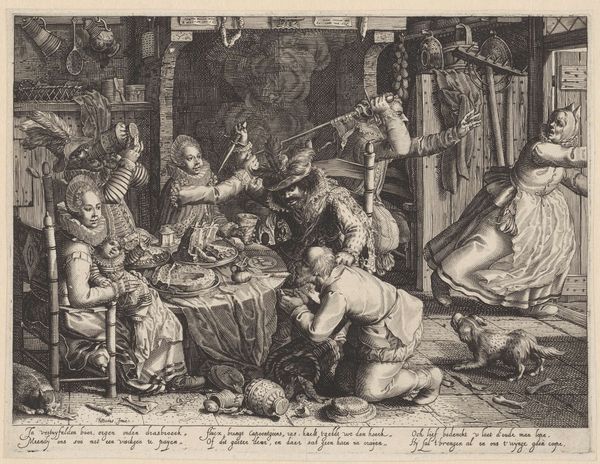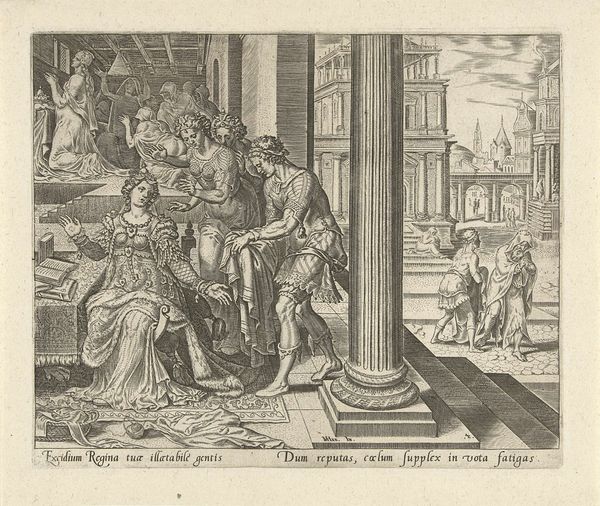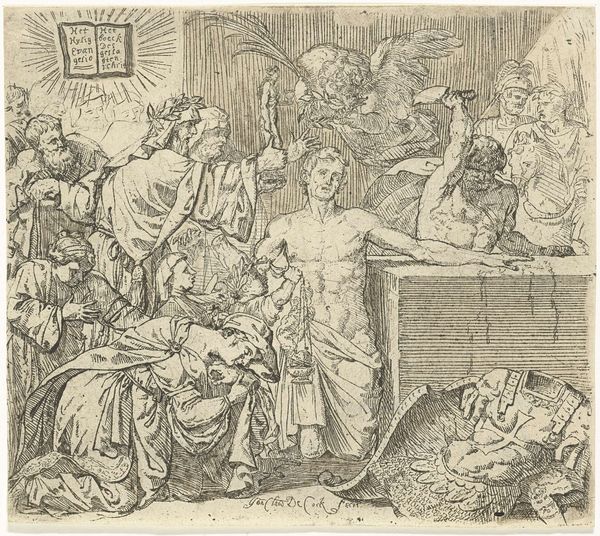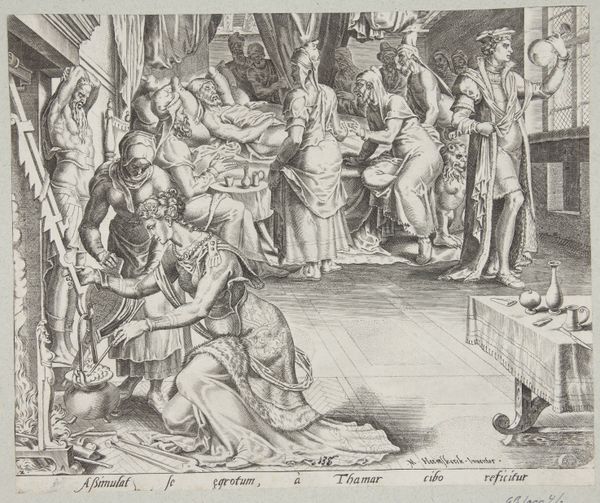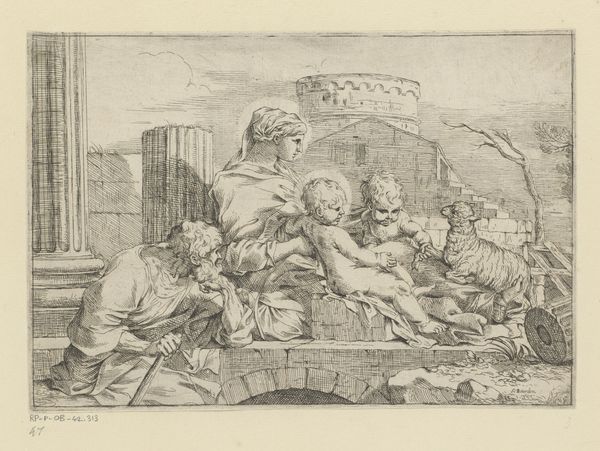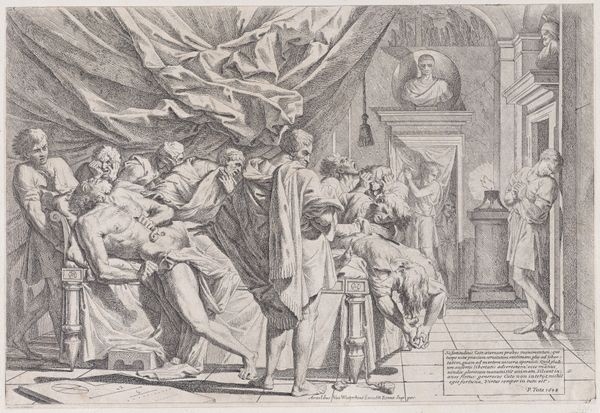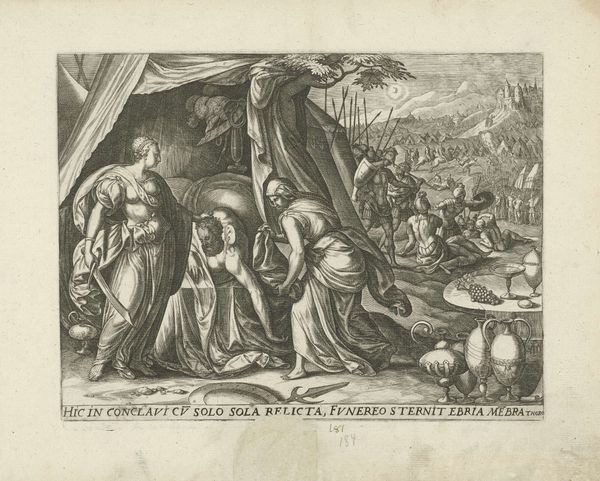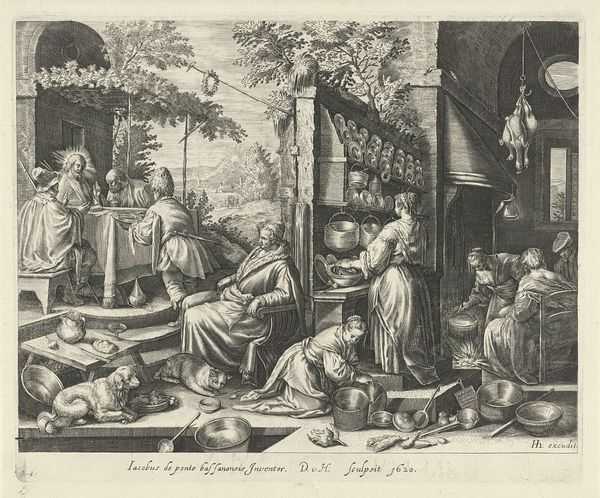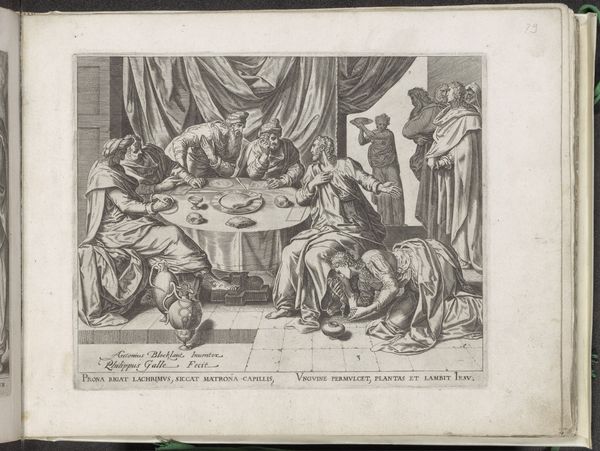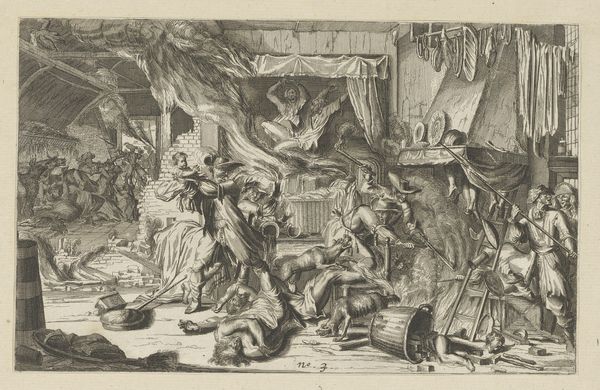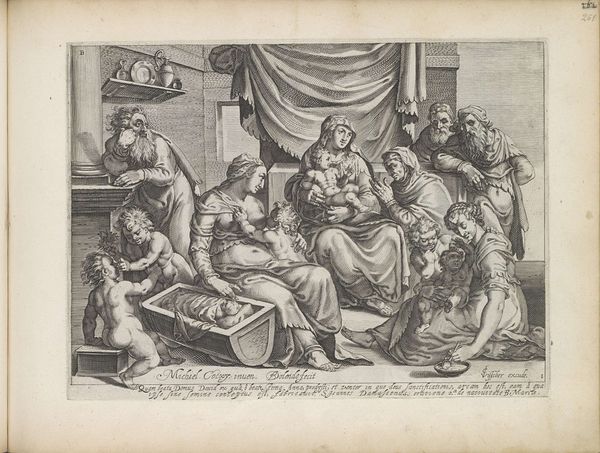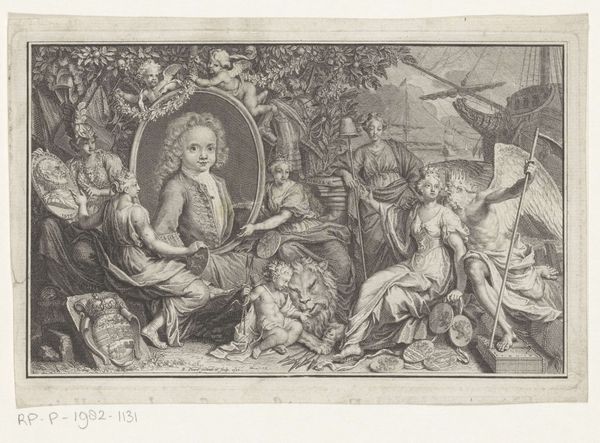
print, engraving
#
narrative-art
# print
#
mannerism
#
figuration
#
history-painting
#
engraving
Dimensions: 202 mm (height) x 246 mm (width) (monteringsmaal), 202 mm (height) x 248 mm (width) (bladmaal)
Editor: Here we have Philips Galle’s "Amnon debauching Tamar," an engraving from 1559. The scene feels incredibly charged and unsettling, even from a distance. There's so much visual tension. What historical contexts are crucial to understanding this piece? Curator: This print depicts a deeply disturbing biblical scene, ripe for analysis through a lens of gender and power. Amnon, a powerful man, rapes his half-sister Tamar, and the engraving visually presents this act and, crucially, its immediate aftermath, with Amnon’s face buried in his hand. We must examine not only the power dynamics at play but also the ways in which Mannerist art often aestheticized violence and suffering. How might this aestheticization serve to further normalize or even condone the act depicted? Editor: It’s interesting you point out the aestheticization. The detail is exquisite, and the setting seems opulent. But looking at Tamar's body language, it feels like her consent was not there at all. I am thinking about modern parallels to rape culture, but is that valid when thinking about the 16th century? Curator: Absolutely, that's a valid and important connection. By drawing parallels to modern rape culture and examining the historical context, we can engage in a crucial dialogue about the persistence of gender-based violence. How might Galle’s artistic choices reflect the patriarchal values of his time, and how do these values continue to resonate in contemporary society? Does the inclusion of details that could be read as aesthetically pleasing perhaps normalize a traumatic, life changing and horrible action? Editor: This piece makes me feel uncomfortable, yet your activist lens and analysis helps bring clarity. This highlights the continued power imbalances even in the depiction, the consumption of it through art, of acts of gendered violence. Curator: Precisely. Art like this demands that we confront uncomfortable truths and consider how representations of power, gender, and violence continue to shape our world. Hopefully this conversation inspires people to view old artworks with new eyes, informed by the important theories of today.
Comments
No comments
Be the first to comment and join the conversation on the ultimate creative platform.
